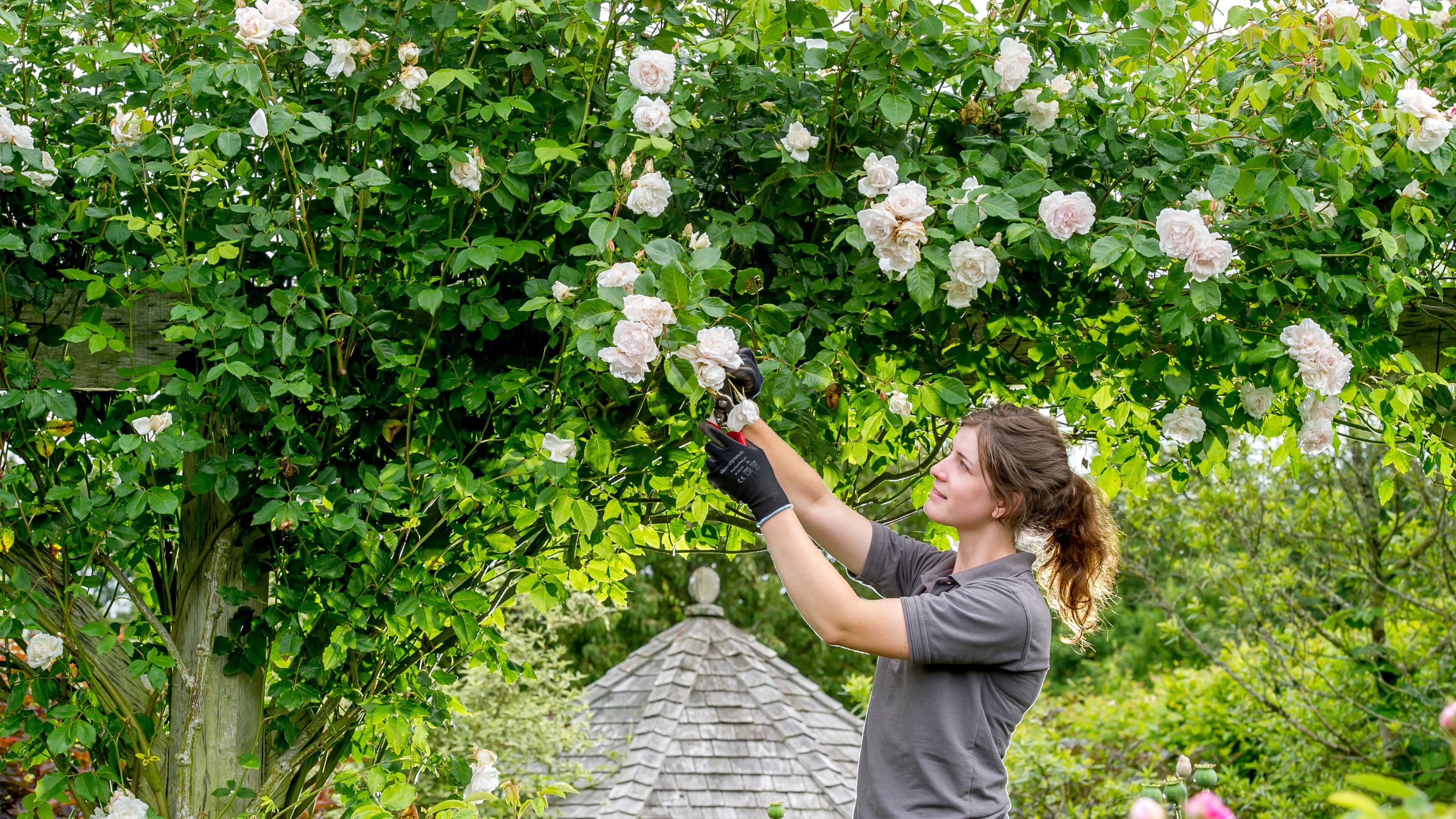
If you’re questioning what plants to prune in August, prepare to be enlightened because we’ve done all the digging and consulted a gardening guru on what greenery you should tackle this month.
Plants are like people. Meaning? Along with food and water, most shrubs require some tender loving care (read: pruning) to help them thrive. If done so at the right time, pruning your plants can work wonders for flower bud formation, shape, and the overall health of your plant. Cutting back stems and browning blooms can also remove unsightly growth.
To help your garden thrive during the warmer months of the year and beyond, it’s a good idea to learn what to prune in summer.
The flowers, shrubs and plants to prune in August, according to an expert
You can get started by keeping a month-by-month calendar of garden jobs so you know the tasks to address and when.
Grab a pair of the best secateurs and keep scrolling to see what a gardening expert has to say.
1. Wisteria
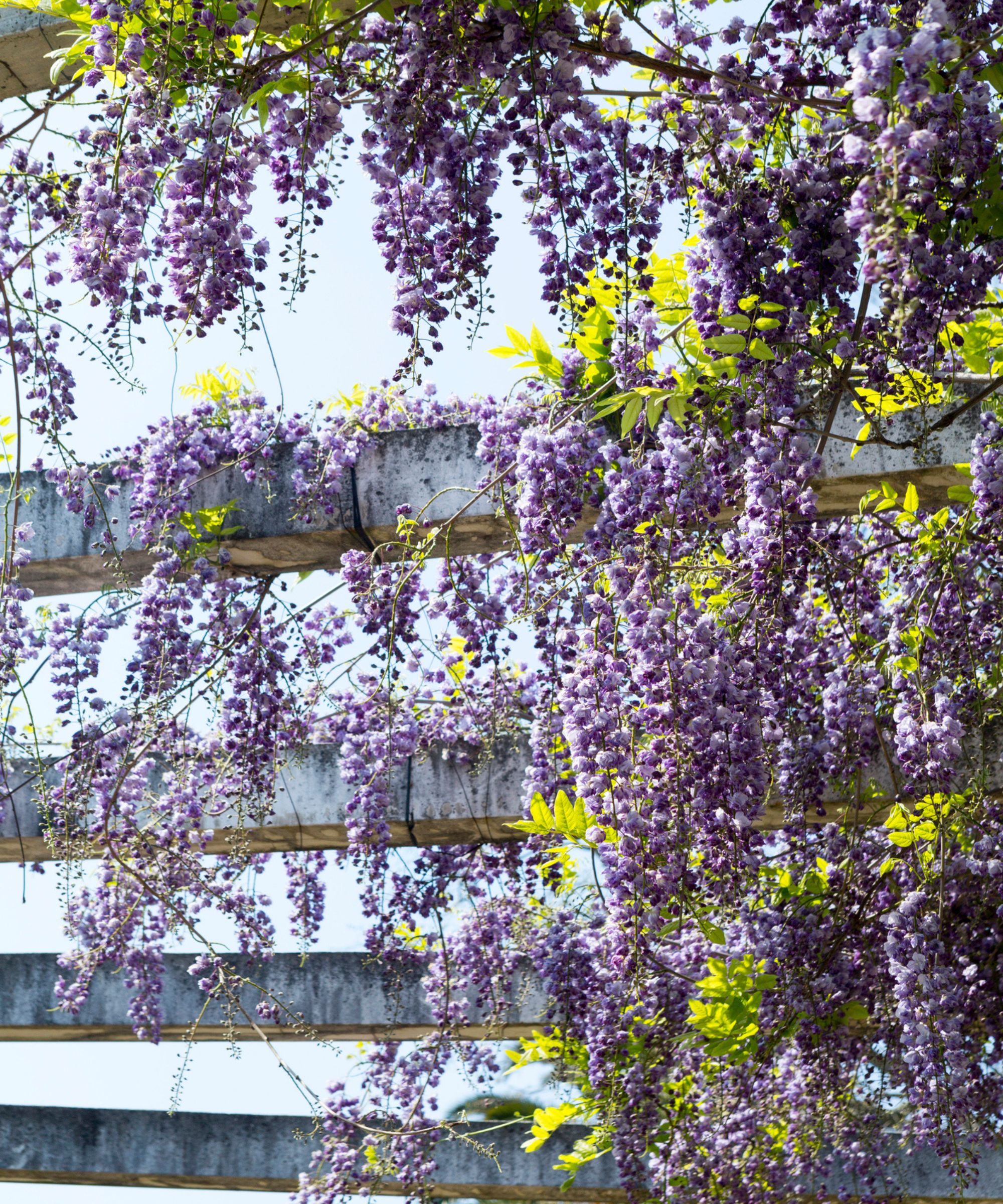
Requiring two rounds of pruning, first in January/ February and then again in August, wisteria might not be considered one of the best low-maintenance garden plants to feature in your outside space. But with its masses of lilac-purple blooms and lush green foliage, this climbing plant does tick all the boxes when it comes to the top Regency garden ideas.
To keep the vines under control, Guy Barter, chief horticulturist at the Royal Horticultural Society, suggests shortening new shoots to about five or six leaves. Typically, wisteria can climb more than 33 ft in height and width (yes, really!). So if your wisteria has grown too tall, Guy recommends leaving the branches to their own devices and keeping them out of harm's way.
He says, “They will flower well enough and it is not worth the risk and trouble of attempting to prune these very tall plants.”
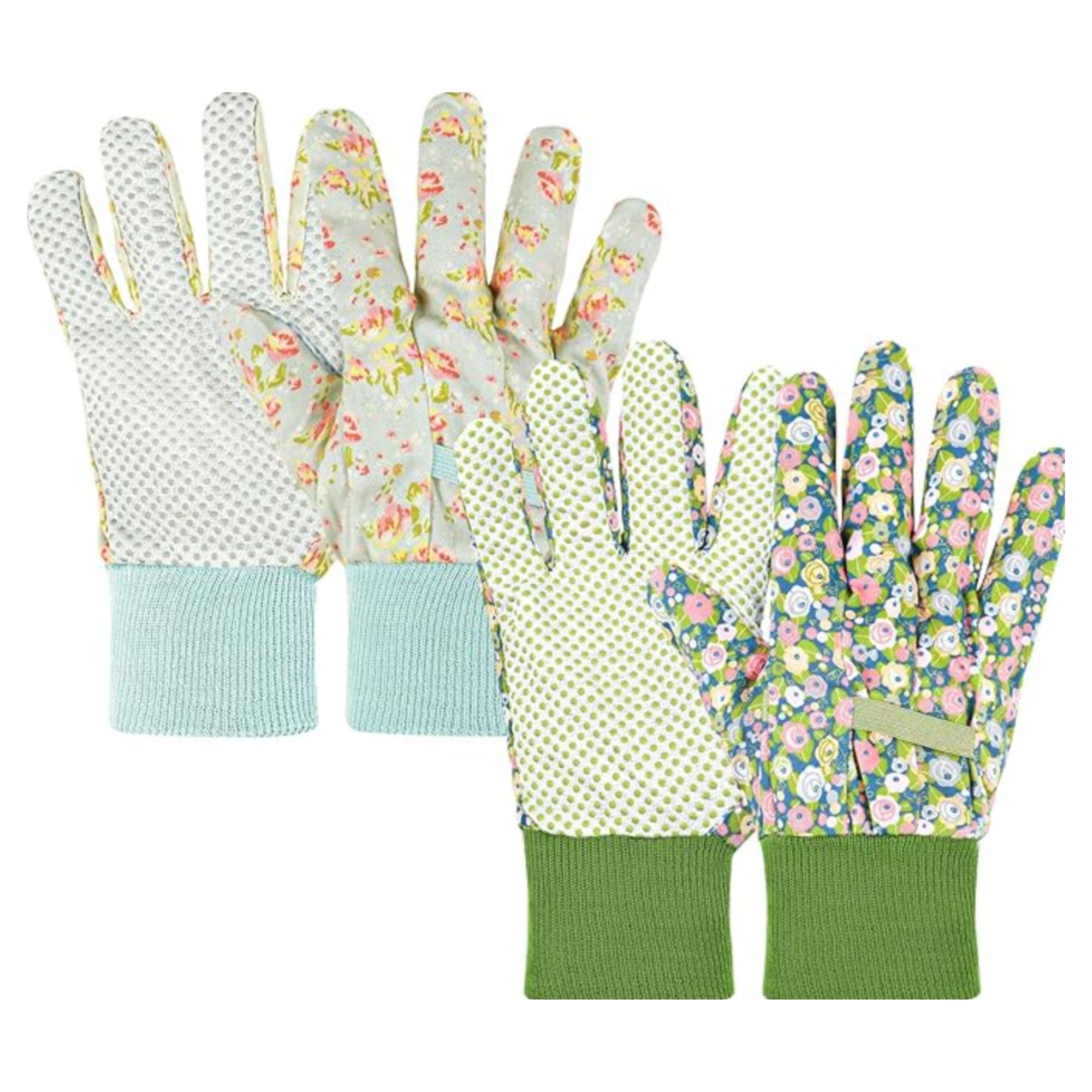
Price: $7.99
Gardening gloves that look good and do good? Look no further! Saving your hands from thorns, dirt, and any allergens, these floral-printed one-size-fits-all grippy gardening gloves come in a pack of two. So once you've finished pruning all your plants in August, you can pop one pair in the wash and wear the others as you tackle your next set of gardening tasks.
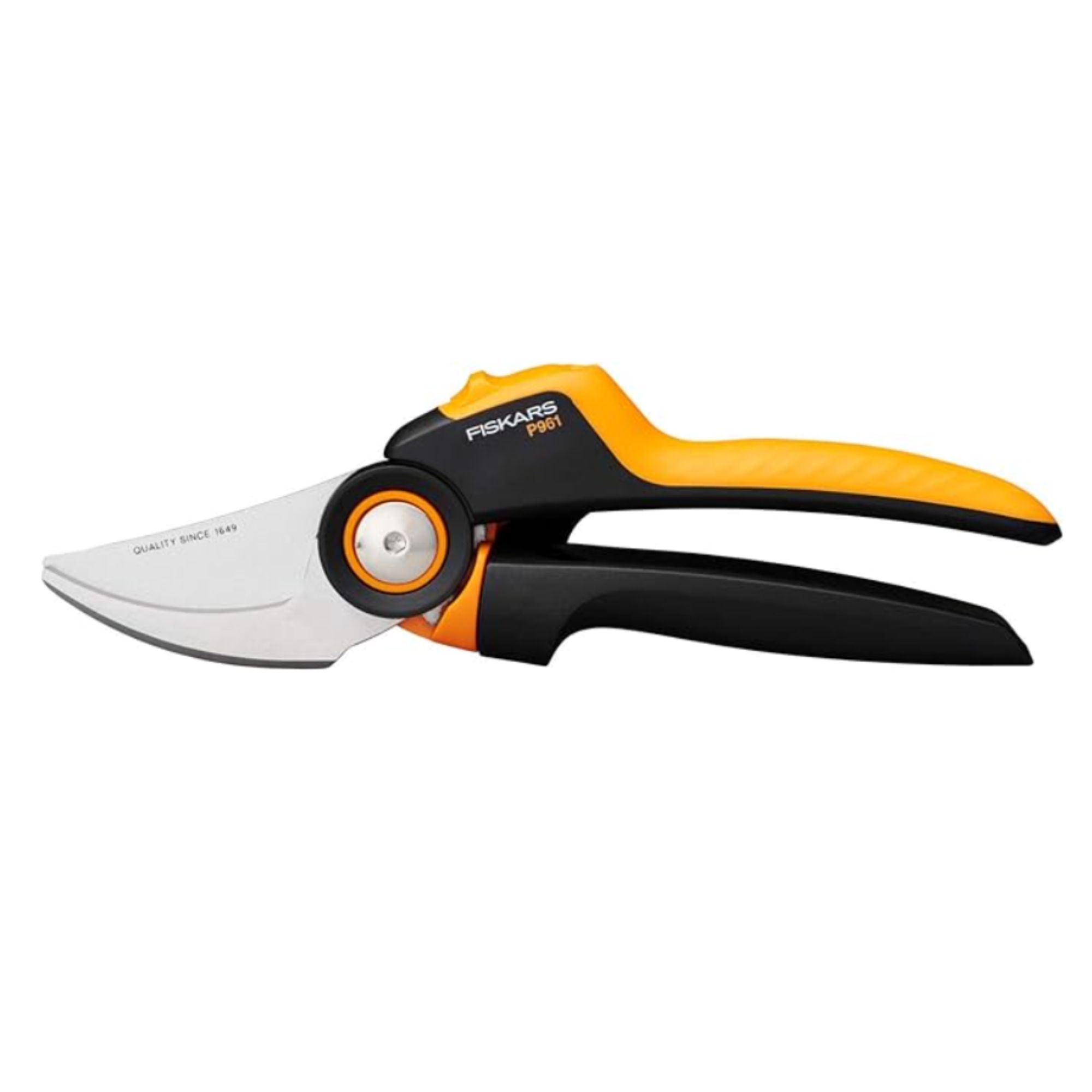
Price: $19.99
Every great pruning session starts with a pair of quality, precision pruners. If you hurry, you can pick up these rust-resistant, stay-sharp forged steel secateurs for 33% off. Usually priced at $29.99, the online retail giant has knocked off $10 bringing these down to $19.99. So you can glide through wood and help keep your garden looking smart, for less.
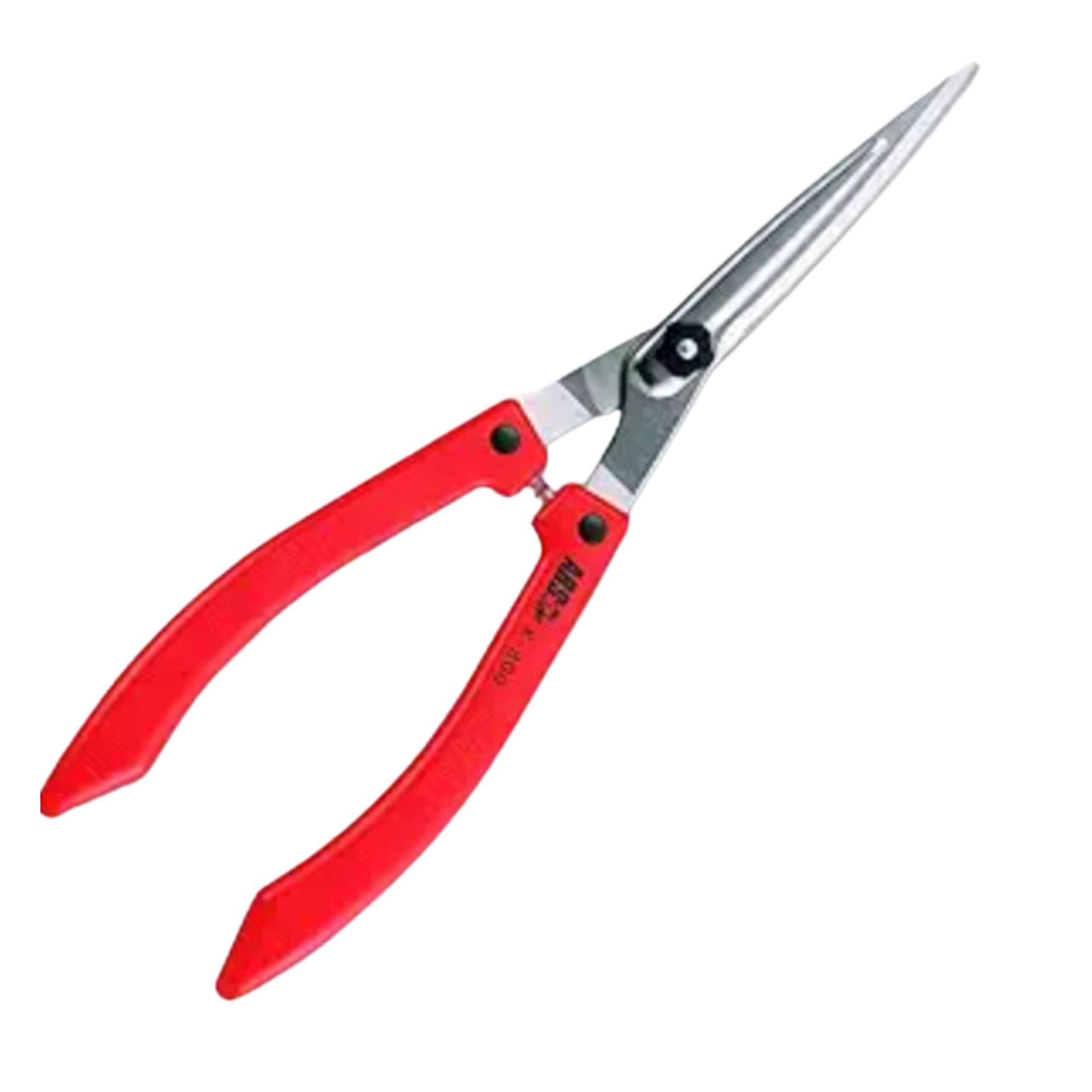
Price: $49.99
Featured in our guide to the best gardening tools, these garden shears are worth their weight in gold. Not only are they lightweight (which is a necessity when pruning long lines of hedgerows and topiaries) these shears are strong, sharp, and are kitted out with ergonomically designed handles, making them easy to hold.
2. Apple and pear trees
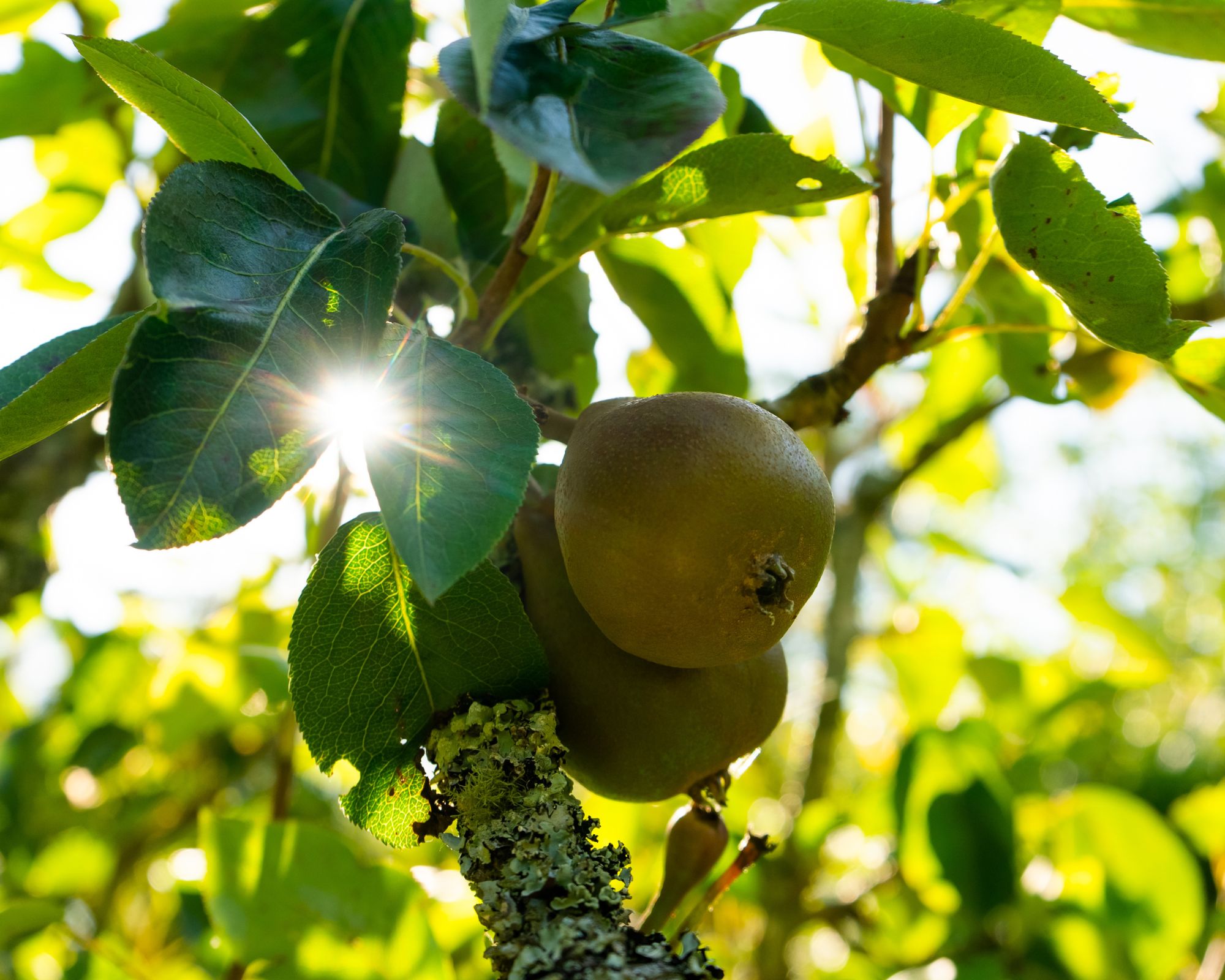
Apple and pear trees are also in need of late summer pruning. However, it’s important to note that we’re only talking about pruning the space-saving restricted forms of apple and pear trees in this instance. So fruit trees that are 'fan' trained.
Therefore, this pruning guidance would only apply to the likes of espaliers or cordons which you may even find growing in small backyards because they can attach to a fence.
To prune them correctly, Guy says, “Shorten new shoots to a few leaves once the tips are beginning to firm which encourages flowers (and therefore fruit buds) to form. Leave little whippy shoots as they often have terminal flowers.”
3. Philadelphus
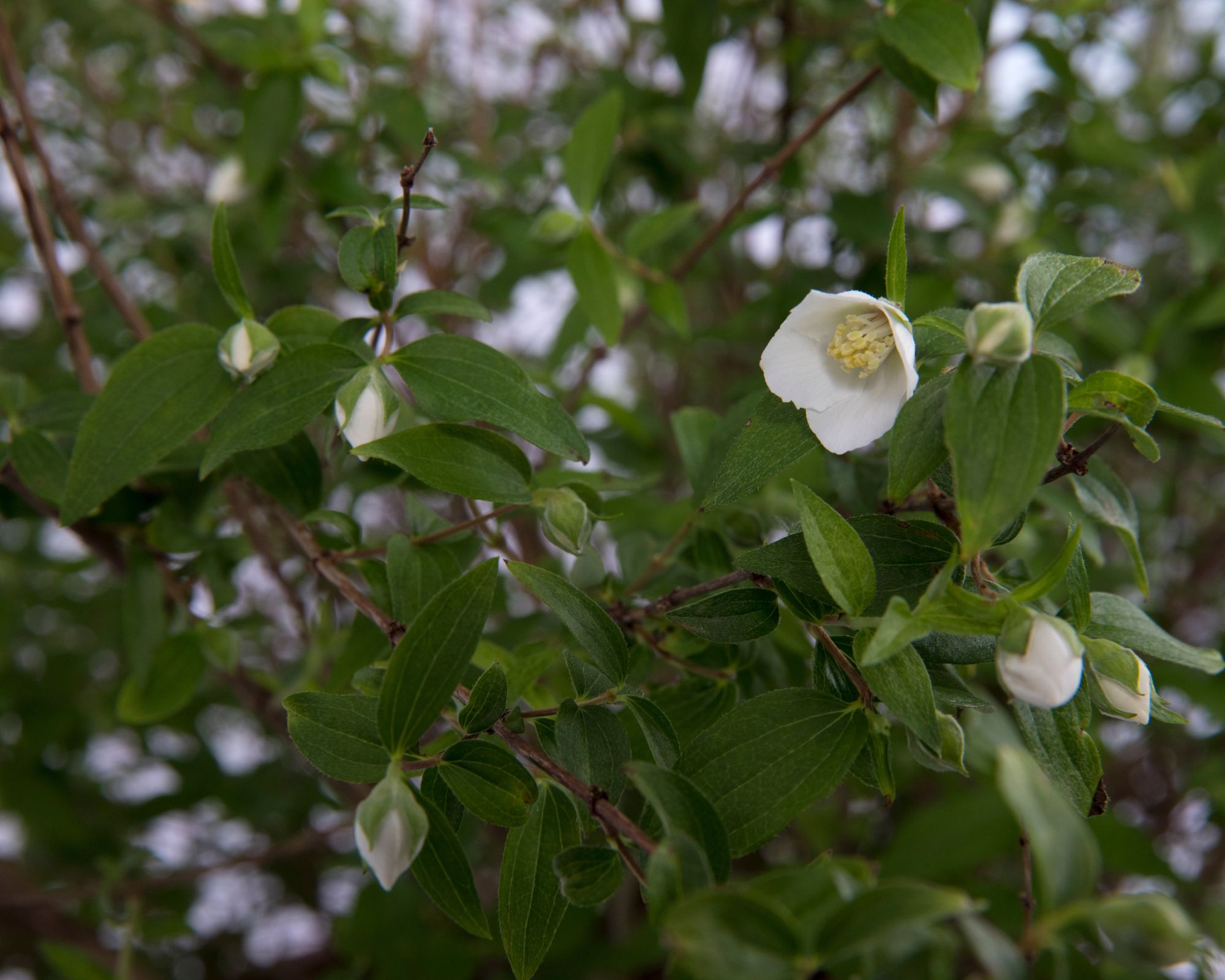
The philadelphus is a deciduous shrub which, in the US, also goes by the name of ‘mock orange’, thanks to its heavy scent of orange blossom. The philadelphus lewisii variety is the state flower of Idaho, and flowers during summer, keeping its foliage throughout spring, summer, and autumn.
To keep these easy-to-grow shrubs compact and well-presented, pruning is essential in August.
“Early summer flowering shrubs such as Philadelphus are pruned as soon as possible [during this month] removing much or even all the shoots that have flowered to as close to the ground as feasible,” Guy tells us. “This keeps bushes compact and leaves the shoots that will flower well-presented for the following year’s blooms.”
To prune your philadelphus, remove much or even all the shoots that have flowered to as close to the ground as feasible. “Typically this will involve removing 25% of the shoots,” Guy adds. Or if you like the look of this shrub and want to plant it in your garden, we recommend this First Editions Snow White Mock Orange because it will bloom twice and year and make your garden smell of oranges first in spring, then again in summer.
4. Gooseberries
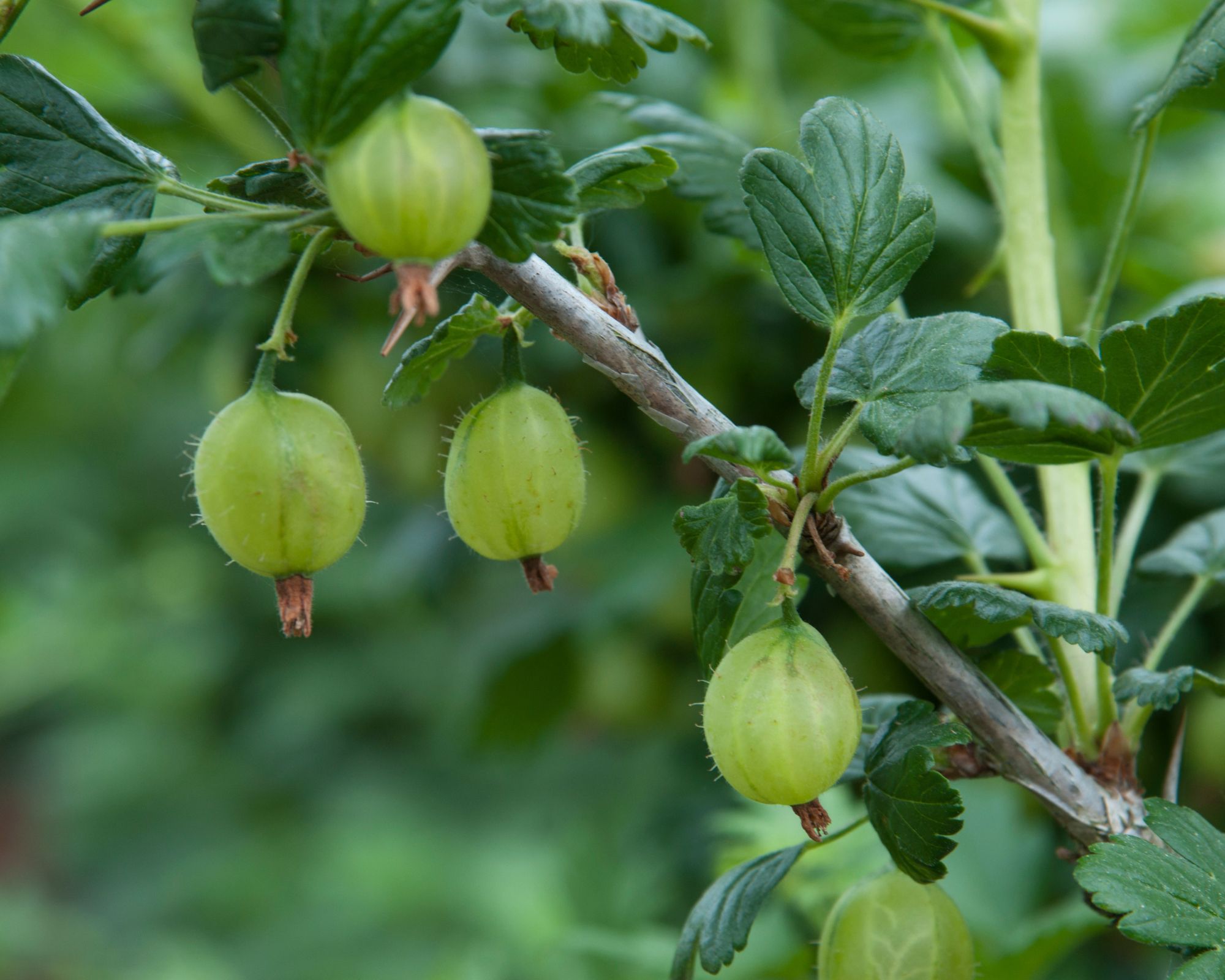
If you've started growing your own fruit after learning how to create a kitchen garden, then you may have gooseberries growing by the dozen.
If that’s the case, August is also the time to prune these prickly plants which grow round, grape-like berries.
“Gooseberries are pruned by shortening all the new growth,” Guy explains. “They fruit on older shoots, so younger ones are shortened to just five leaves or so. Choose upward pointing buds to counter the drooping habit of gooseberry growth.”
Failure to prune these shoots can result in trailing branches which can become a tangled and congested mess. So grab a pair of the best gardening gloves to protect your hands from any scratches or pricks and get pruning.
5. Roses
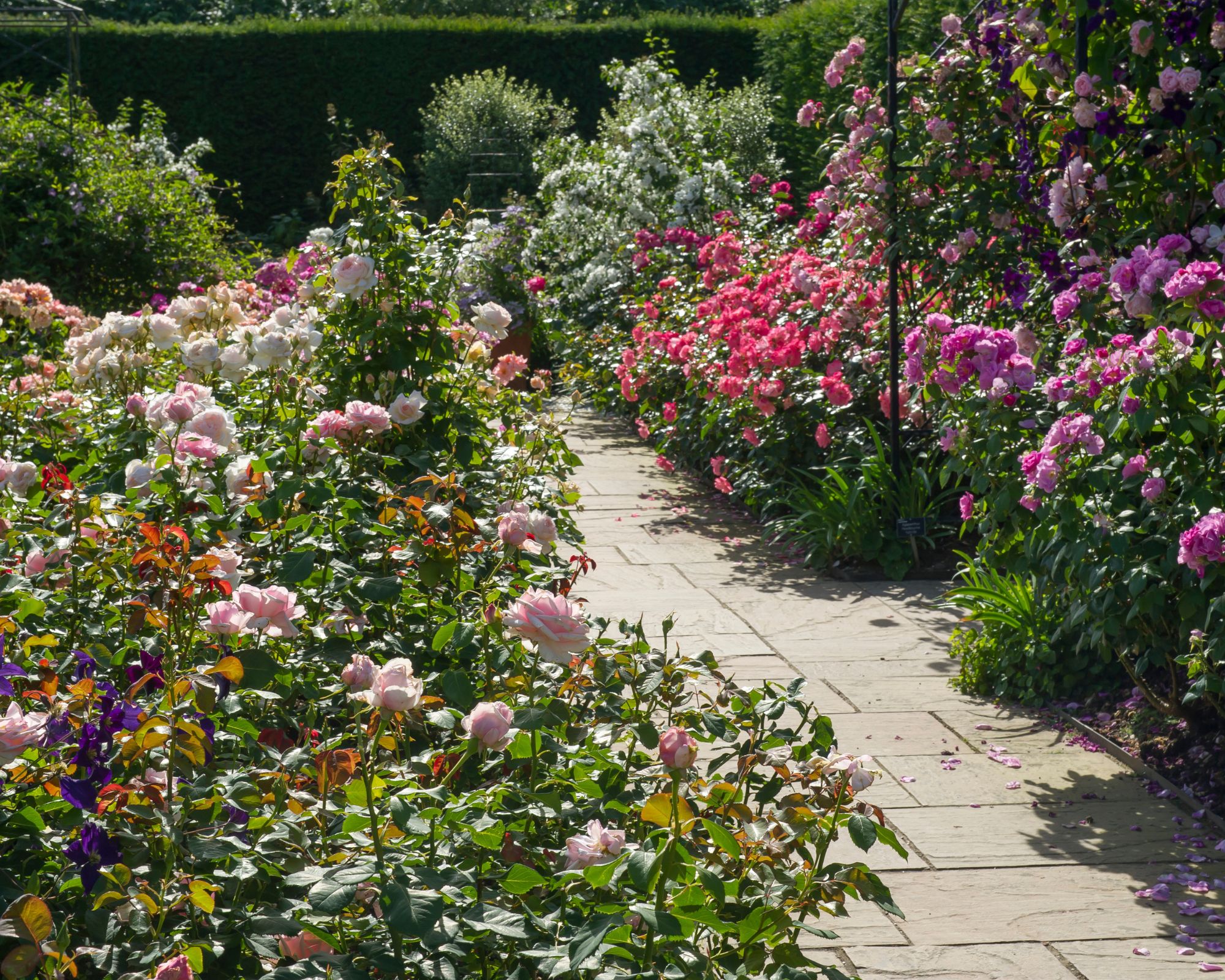
Helping to add some color, scent, and softness to harsh structures or blank spaces, rambling roses are long-loved favorites in the gardening world — and for good reason. Interested in adding one to your space? This Zephirine Drouhin Climbing Rose is a good pick because many of these large flowers have as many as 25-30 petals each!
Just know: unlike a climbing rose or a shrub rose, after June these rambling variates won’t repeat flower.
So, while you won’t need to learn how to deadhead roses on this occasion, you will need to prune them in August to make sure the plant grows vigorously and flowers well the following year.
“Rambling roses that have finished flowering are pruned in late summer,” Guy says. “Take out all stems that have flowered, tie in their younger replacements and shorten side shoots.”
6. Deciduous hedges
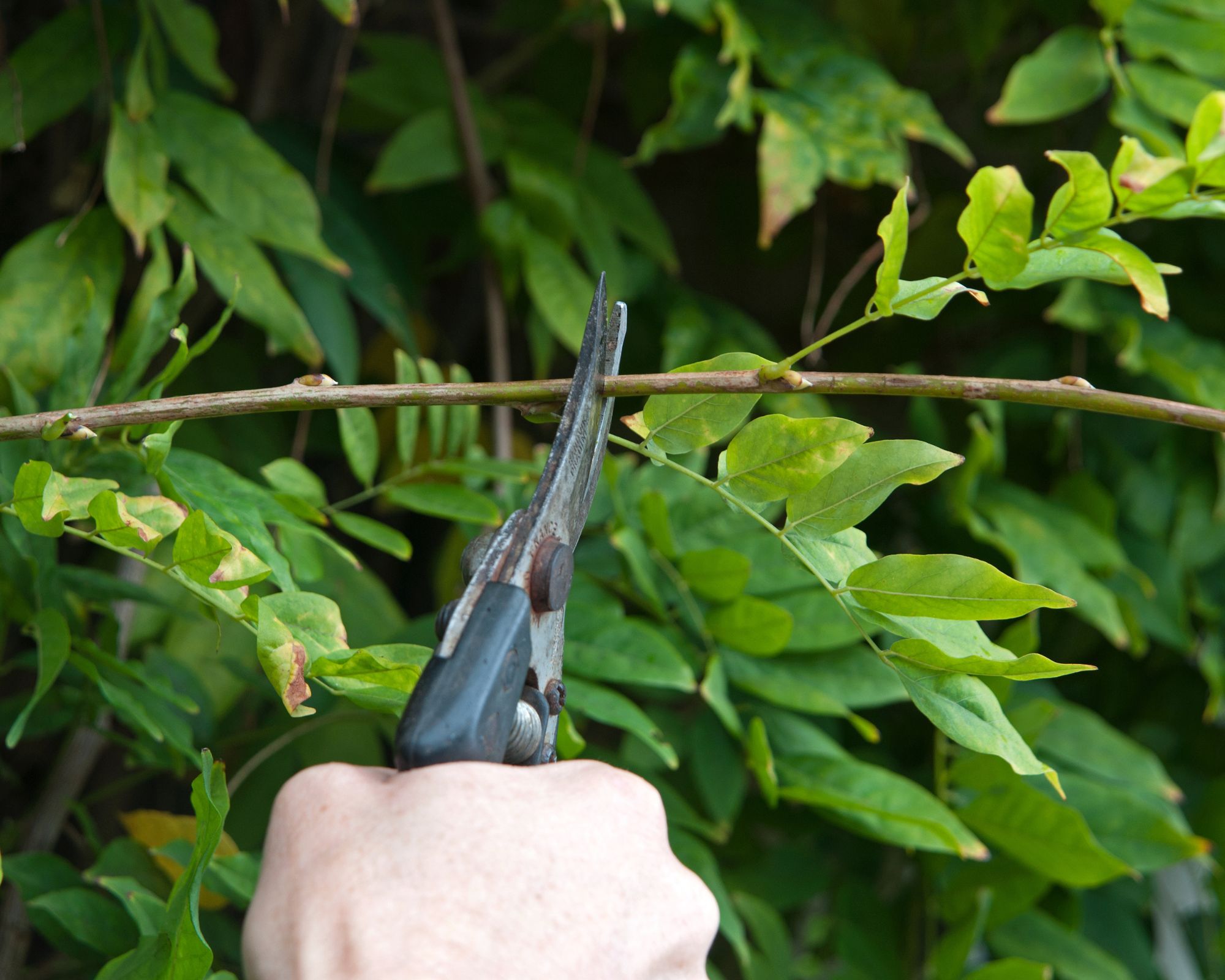
If you’ve mastered the art of how to improve privacy in your garden, you may have added some hedges to your outdoor space, to up the levels of seclusion.
If so, and they are of the deciduous kind (so shed their leaves during the autumn or winter), according to Guy, August is the time to prune these.
“Deciduous hedges, like beech and hornbeam for example, can be pruned in late summer,” Guy tells us. “They will soon regrow to leave a lovely mossy finish until the leaves fall. Great care must be taken to ensure no nesting birds are present,” the expert flags.
To cut back your deciduous hedges, dig out your best gardening tools and trim with a pair of shears or a hedge trimmer. “Ensure the bottom is slightly wider than the top, otherwise the top can dominate and the base can die out,” Guy adds.
7. Evergreen hedges and topiary
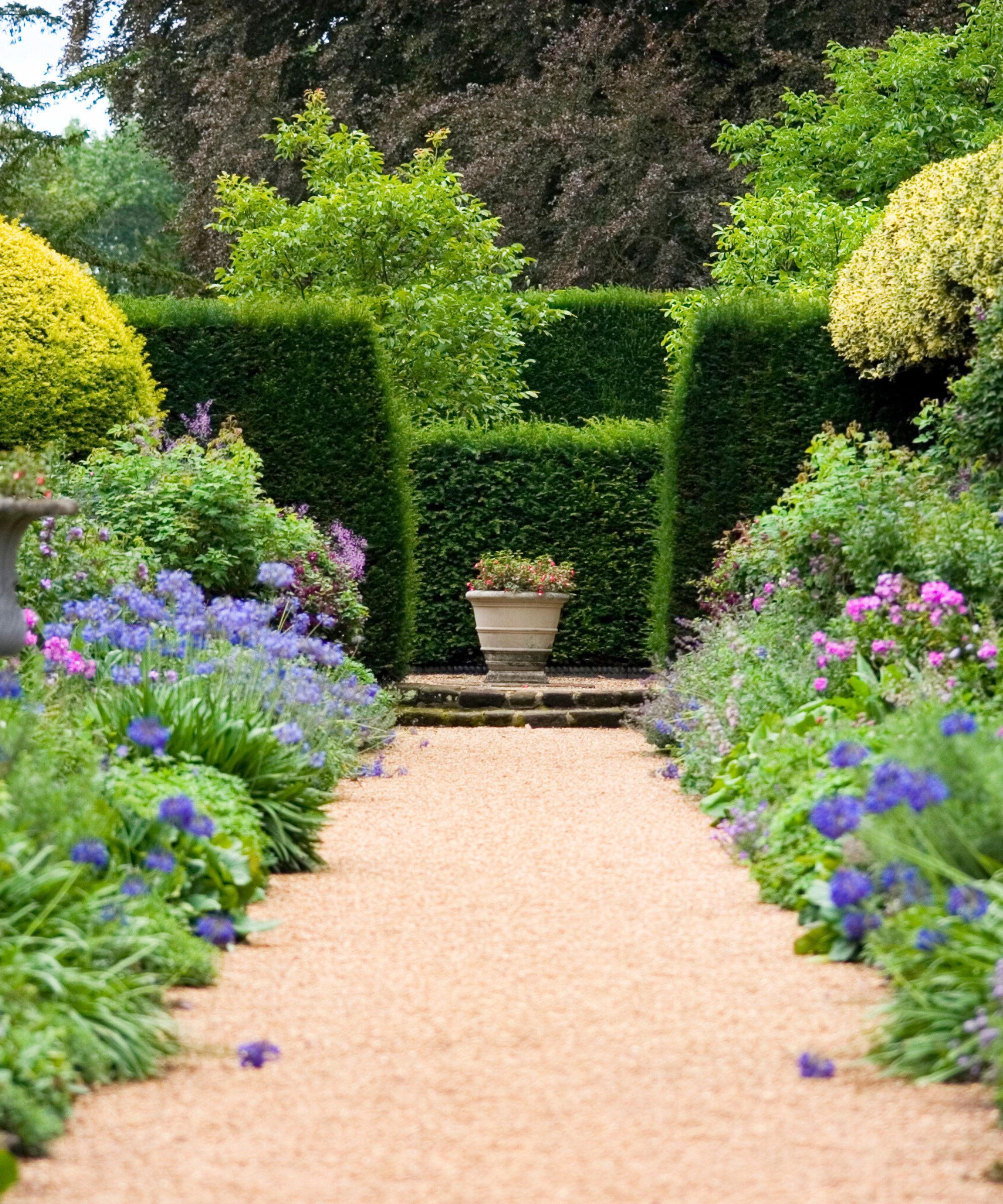
Whether you’ve got yew, California privet, or cherry laurel, August is the month to prune these green goods with one of the best hedge trimmers or one of the best cordless hedge trimmers so they will regrow with a smooth finish that will persevere until winter.
To do so, “Trim with shears or a hedge cutter for those with large leaves, like cherry laurel for example,” Guy advises. “Then carefully cut back with secateurs to avoid unsightly damaged leaves.”
Just remember: birds love hedges, so before pruning topiary, care must be taken to avoid disturbing wildlife, Guy warns.
The greenery you shouldn't prune in August
After all that pruning, it can be tempting to go full steam ahead and tidy up some of your wilting border plants or remove dying branches elsewhere in your garden.
But before you put secateurs to shrubs or start tidying up your trees, Guy says these are the two pieces of greenery that shouldn’t be pruned right now.
“It’s best not to do much pruning until after leaf fall as plants may be weakened and less able to withstand winter,” the expert tells us. “Also, [shrubs and trees] may attempt to regrow and frosts might damage the tender young shoots.”
So, when should you prune them? “Leave evergreen shrubs until spring as they don’t go properly dormant and need their foliage to survive winter,” Guy adds.
Meet our expert
Now that you’re in the know about what plants to prune in August, you might be interested to learn about the seven flowers you don’t have to deadhead — so put those secateurs away.
Or, if you’re keen on adding some low-maintenance garden ideas to your outside space, so you can spend more time enjoying your outdoors and less time maintaining it, do check out our fuss-free guide.







